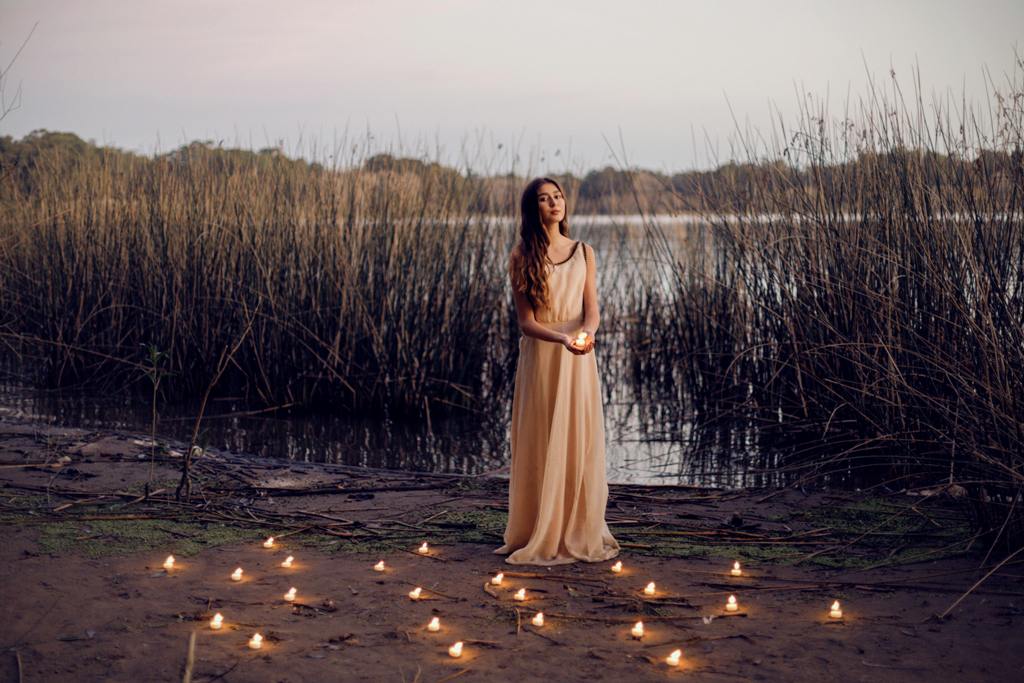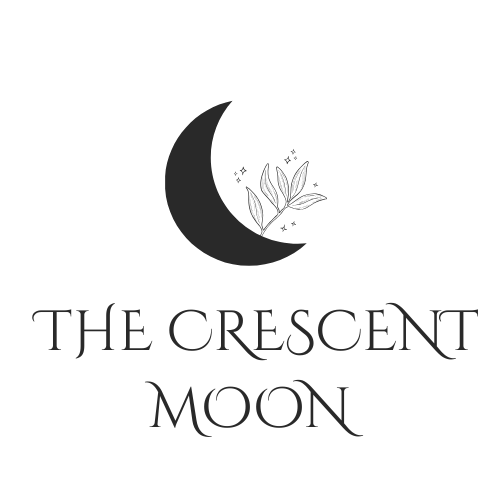
What are Earth Based Religions? Significance of the sun and the moon.
Share
In the celtic earth based religions, the sun and moon held significant roles and were often associated with deities and the cycle of life. The Celts were ancient Indo-European people whose territories stretched across much of Western Europe including Ireland, Scotland, Wales, France and central Europe. Earth based religions varied across different regions and time periods, there were common themes and deities related to the sun and moon. They listened to the earth and let its cycles guide them in belief, faith and in life.
The sun was seen as a powerful and life-giving force in the old earth based religions. It represented warmth, light, and growth, and its cycles influenced the agricultural and seasonal patterns that were crucial to their way of life. The sun was often associated with various deities, particularly gods and had different names and forms depending on the Celtic culture and region.
In Irish mythology, the sun was associated with the deity Lugh (also known as Lugus), who was a prominent figure in Celtic pantheons. Lugh was a multi-skilled god, often linked to light, craftsmanship, and leadership. His festival, Lughnasadh, was celebrated around the beginning of August and marked the first harvest. In Australia or the southern hemisphere it is celebrated in February.
The moon, on the other hand, was often associated with feminine energies, goddesses and fertility and the cycle of life. Just like the sun, the moon's phases played a role in Celtic agricultural and sacred ritual practices. Its phases helped them track time, plan festivals, and decide when to plant and harvest crops. This connection made the moon a powerful and sacred force in Celtic life and spirituality.
In Celtic mythology, the moon was sometimes linked to goddesses associated with fertility, the earth, and the natural cycles. In the Welsh tradition, for instance, Arianrhod was a goddess who was often associated with the moon and stars. She was seen as a symbol of femininity and had connections to the cycles of birth, death, and rebirth.
Celtic beliefs were deeply intertwined with the natural world and its cyclical patterns. The changing seasons, the waxing and waning of the moon, and the rising and setting of the sun all played integral roles in their understanding of life, death, and the interconnectedness of all things. These cycles were mirrored in their rituals, festivals, and daily life.
The Celts worshiped a wide range of deities, each associated with different aspects of life and nature. Key god and goddess deities included:
Alator: God of war and protection, name means "he who nourishes the people"
Albiorix: God of protection and war, name means "king of the world"
Belenus: God of healing, name means "Bright one"
Borvo: God of healing waters and minerals
Brea: God of fertility, tyrant ruler
Cernunnos: Horned god of nature, fertility, the underworld, wealth, fruit
Esus: God of strength and human sacrifice
Lenus: God of healing associated w Roman god mars
Lugh: God of the sun and craftmanship, justice and rulership
Maponus: God of music, poetry and youth
Nuada: God of healing, the sea and warfare
Brigantia: Goddess of rivers and waters, poetry and crafts
Brigit: Goddess of fire, fertility, healing, cattle and poetry
Ceridwen: Goddess and sorceress, poetic wisdom, prophecy, magic and rebirth.
Epona: Horse goddess, fertility and cornucopias, horses and mules
Medb: Goddess of sovereignty and motherhood. Alsoknown as Maeve.
Morrigan: Goddess of war and death, fate and battle. A great warrior queen.
Morgan Le Faye: Triple goddess of death and rebirth. represents Maiden, mother, crone.
Nehalennia: Goddess of seafarers, fertility and abundance
Nemausicae: Mother goddess, fertility, healing
Nerthus: Goddess of fertility, peace and prosperity
Saitada: Goddess of grief and protection.
Shelia Na Gig: Irish goddess of birth and death. The celts honoured the sacred power of the female genitalia and used sculptures of such for protection.
Sulis: Goddess of Health and healing waters.Sun goddess
Who were the Druids?
Druids were members of the educated, professional class among the Celtic peoples of Gaul, Britain, Ireland, and possibly elsewhere during the Iron Age. They were known for their knowledge of the natural world, astronomy, and magic. While they may not fit the typical image of a wizard, druids were deeply connected to nature and were believed to have had the ability to perform rituals, communicate with spirits, and cast spells. They were the leaders if you like of the old earth based religions.
There are several earth-based religions today that are similar to the old Celtic beliefs. Neopaganism is a group of modern religions that draw on old European pagan beliefs, including Celtic ones. Wicca is a modern religion that includes elements of witchcraft and celebrates the cycles of nature, similar to the Celts. Modern Druidry, inspired by the ancient Celtic Druids, honors nature, ancestors, and seasonal festivals. Heathenry mainly focuses on Norse and Germanic traditions but sometimes includes Celtic elements. Animism, the belief that everything in nature has a spirit, is common in many earth-based religions.
These religions celebrate the natural world and seasonal changes, and they often look to the past to guide their practices today. Some seasonal rituals like Samhain and Beltane have gathered momentum and popularity in recent years which shines a light on the old ways of earth based religions. There are many groups like the British Druid order that continue to celebrate Samhain and Beltane at Stonehenge and other sacred sites in Great Britain.
Practicing an earth based religion doesn't mean you have to join a group or follow any particular belief system. It can be a deeply rewarding and personal journey to have a nature based spirituality in your life. The first thing you can do is get some insight and learn about the traditions, history and mythology of earth based religions.
Spend time outdoors to develop a deeper connection with the natural world. Go for walks, hike, garden, or simply sit out in the bush and listen to the roar of the wild. Observe the changing seasons, weather patterns, observe and enjoy the sunrise and moonrise. This is a time i give thanks, i thank the sun as it rises for lighting my way and giving warmth, light and life, and the moon for its lunar energy as it waxes then wanes. If you have ever watched a full moon rise you know how magick it can be.
Set up an altar or sacred space in your home. This can include natural items like stones, leaves, flowers, and seasonal symbols. Use this space for meditation, rituals, and reflection. Many sacred herbs, symbols and rituals have special connections to mythology, gods and goddesses.
Learn about the elements (earth, air, fire, water) and incorporate them into your practice. This could involve working with herbs, crystals or other natural materials.
Learn about the seasonal rituals and festivals and mark the turning of the seasons with simple rituals or ceremonies. Light candles, say prayers, or make offerings to honor the cycles of nature. The sabbats including the solstices, equinoxes are key points in the earth-based calendar. Sabbats are seasonal markers and include:
Yule / Winter Solstice
Imbolc / Candlemas
Ostara / Spring Equinox
Beltane / May day
Litha / Summer Solstice
Lammas or Lughnasadh
Mabon / Autumn Equinox
Samhain / Halloween / Hallows Eve
These festivals celebrate various aspects of nature, the changing seasons, and deities associated with these times of the year. The southern hemisphere and northern hemisphere pretty much celebrate the sabbats at opposite times of the year to remain in harmony with the local seasonal changes and agricultural cycles.
By incorporating these practices into your life, you can develop a meaningful and personal connection to an earth-based spiritual path. Just remember that no path is wrong, there is no one telling you what to believe, no one knocking on your door converting you, and no political or financial agenda as in main stream religions. Its just you giving thanks and respecting what is giving us life on earth: that is nature. While in the Celtic and any other old earth based religion deities are still revered. In Celtic religion, gods and goddesses were often seen as having equal power, each governing different aspects of life and nature, reflecting a balanced and complementary relationship between masculine and feminine divine forces that show how opposites balance each other, highlighting how different forces work together and support each other in life and beliefs.
In all, embracing an earth-based religion can profoundly change your outlook on life. Through simple rituals and mindful practices, an earth-based faith can help you connect with the natural world, encouraging a more balanced, grounded way of life.

Image Supplied by The celts:https://www.facebook.com/TheCelts.Royalty

* ARTWORK BY HRANA JANTO FROM THE GODDESS ORACLE BY AMY SOPHIA MARASHINSKY
